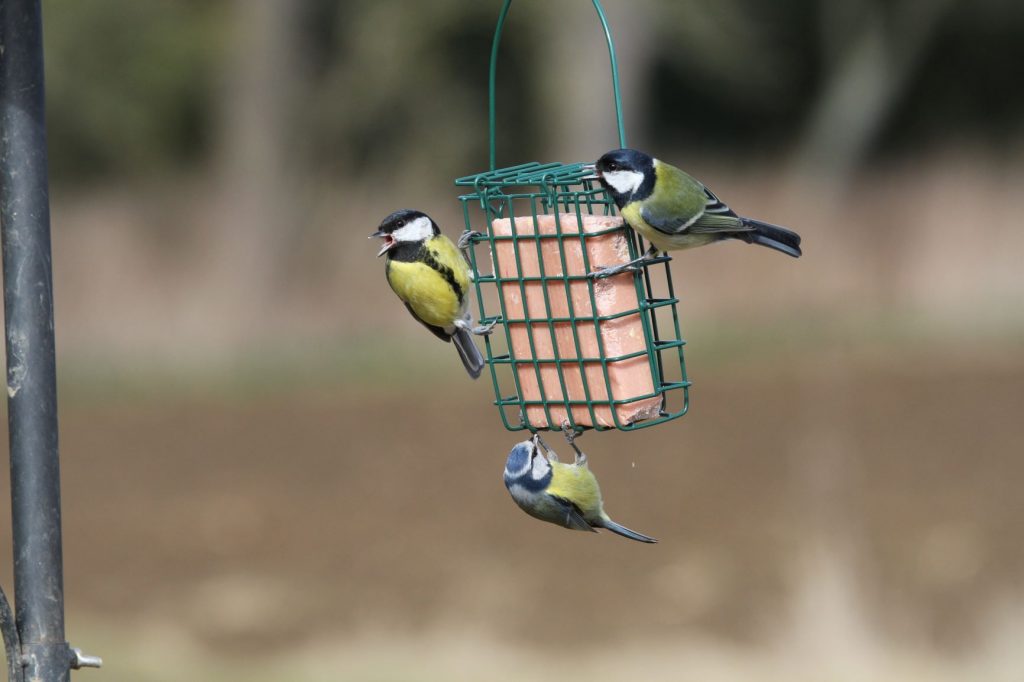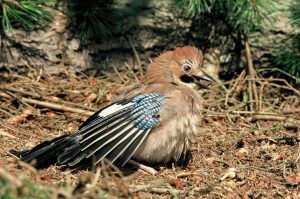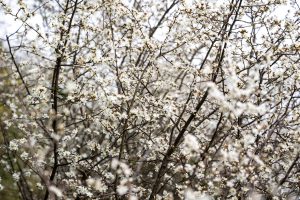Should we keep feeding the birds?
For many who look to protect our wildlife and, particularly our bird population, the recent publication of a report by Dr Alex Lees (Senior Lecturer in biodiversity at Manchester Metropolitan University) in the journal Conservation Biology must have come as something of a shock. The report enjoyed widespread coverage in both the mainstream and social media, and will have undoubtedly concerned many wildlife enthusiasts.
In his report, Dr Lees says that when we provide garden birds with food, we inadvertently favour some species over others. Dominant species such as Blue and Great Tits make the most of the food on offer, sometimes at the expense of the likes of the Willow Tit, whose numbers are in severe decline. The abundance of food, coupled with often a ready supply of nest sites in the form of nest boxes, can increase the population of Blue Tits in certain areas. Dr Lees feels that Great Tits potentially impact the number of flycatchers that successfully breed in this country. They look for broadly similar nest sites and outcompete the flycatchers when it comes to setting up a home.
Shortly after the publication of the report, Dr Lees took part in the BBC’s Inside Science podcast. In it, he talked about how different areas would probably benefit from different feeding practices. He mentioned farmland Finches, and Buntings require particular help due to the loss of their natural feeding areas and food. He feels that it would be more beneficial to feed specifically for these birds in these areas, rather than feed for all of the birds that may enter your garden. As he points out, Blue Tits can travel some distance to a reliable food source. So maybe those you see in your garden might not be 'your birds' after all!
Mike Toms, BTO’s Head of Communication, was asked to comment in an article published by the BBC. In it, he noted that the BTO's studies have shown that feeding can be linked to what he called "the reorganisation of communities to birds". He went on to say that he wouldn't suggest that people take down their feeders on the basis of these findings.
It would seem that in feeding the birds, we are trying to achieve a delicate balance. We are trying to do what we can to offset the loss of habitat and food brought about by climate change, human interference and changes to farming practices. But I'm sure everyone who feeds the birds wants to do so in a responsible way. Dr Lee suggests that we should all be wildlife gardening as much as possible, thereby providing more natural food for those birds that need it. It also helps provide habitat and increases the insect population, food for insect-eating species of birds and bats.
Dr Lees report is not the first to have looked at the issue of feeding wild birds, and it probably won't be the last. But it seems like changing how and what we feed the birds is a subject that will need more research to find a solution that suits all areas. A change in feeding practice in one location won't work in another, so until we find an easy way to put in place specific feeding pans for particular areas, we will need to continue as we are.
This report might prompt people to look in more depth at the food they are providing with the possibility of making some changes. A wide range is available, so we should be able to better tailor what we are giving and when. Whatever approach we choose to take, with meteorological autumn now upon us, our thoughts need to turn to what we can provide to provide all birds with the best chance to see it through the coming winter.
© Phil Pickin 2021
In his report, Dr Lees says that when we provide garden birds with food, we inadvertently favour some species over others. Dominant species such as Blue and Great Tits make the most of the food on offer, sometimes at the expense of the likes of the Willow Tit, whose numbers are in severe decline. The abundance of food, coupled with often a ready supply of nest sites in the form of nest boxes, can increase the population of Blue Tits in certain areas. Dr Lees feels that Great Tits potentially impact the number of flycatchers that successfully breed in this country. They look for broadly similar nest sites and outcompete the flycatchers when it comes to setting up a home.
Shortly after the publication of the report, Dr Lees took part in the BBC’s Inside Science podcast. In it, he talked about how different areas would probably benefit from different feeding practices. He mentioned farmland Finches, and Buntings require particular help due to the loss of their natural feeding areas and food. He feels that it would be more beneficial to feed specifically for these birds in these areas, rather than feed for all of the birds that may enter your garden. As he points out, Blue Tits can travel some distance to a reliable food source. So maybe those you see in your garden might not be 'your birds' after all!
Mike Toms, BTO’s Head of Communication, was asked to comment in an article published by the BBC. In it, he noted that the BTO's studies have shown that feeding can be linked to what he called "the reorganisation of communities to birds". He went on to say that he wouldn't suggest that people take down their feeders on the basis of these findings.
It would seem that in feeding the birds, we are trying to achieve a delicate balance. We are trying to do what we can to offset the loss of habitat and food brought about by climate change, human interference and changes to farming practices. But I'm sure everyone who feeds the birds wants to do so in a responsible way. Dr Lee suggests that we should all be wildlife gardening as much as possible, thereby providing more natural food for those birds that need it. It also helps provide habitat and increases the insect population, food for insect-eating species of birds and bats.
Dr Lees report is not the first to have looked at the issue of feeding wild birds, and it probably won't be the last. But it seems like changing how and what we feed the birds is a subject that will need more research to find a solution that suits all areas. A change in feeding practice in one location won't work in another, so until we find an easy way to put in place specific feeding pans for particular areas, we will need to continue as we are.
This report might prompt people to look in more depth at the food they are providing with the possibility of making some changes. A wide range is available, so we should be able to better tailor what we are giving and when. Whatever approach we choose to take, with meteorological autumn now upon us, our thoughts need to turn to what we can provide to provide all birds with the best chance to see it through the coming winter.
© Phil Pickin 2021



